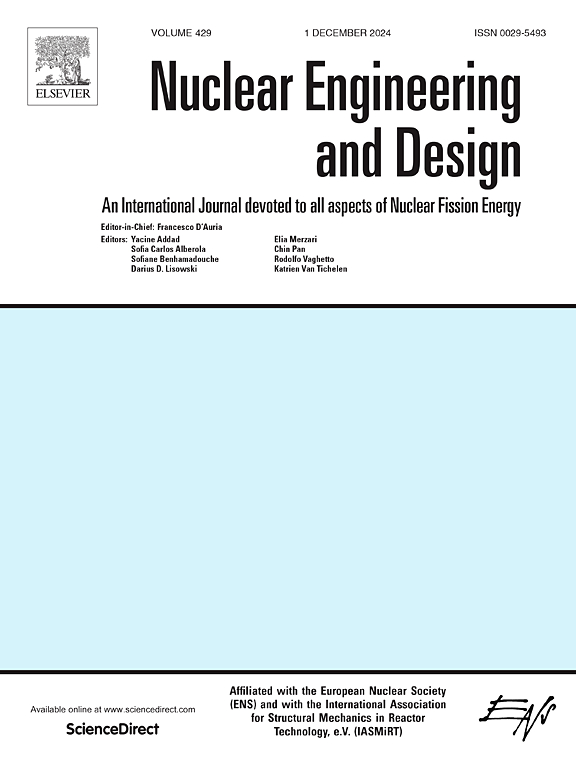Numerical simulation of seismic response of spent fuel pool considering structure-fluid-structure interaction
IF 1.9
3区 工程技术
Q1 NUCLEAR SCIENCE & TECHNOLOGY
引用次数: 0
Abstract
The objective of the paper is to assess approaches to include the effect of fluid–structure along with equipment-fluid–structure interaction by evaluating the response of a typical spent fuel pool found in Westinghouse type Pressurized water reactor auxiliary building to earthquake loading, as well as to derive the seismic demand in critical structural members for the needs of a seismic fragility analysis. Different approaches are presented to account for fluid–structure interaction during the dynamic nature of seismic loading. All structural key aspects considered relevant are included in the analyses: the concrete box structure, the outlining stainless-steel liner, its connections, the submerged rack’s structure, and the containing fluid.
Three numerical models were developed and tested with the finite element code LS-Dyna with different implementations considering the fluid–structure interaction to demonstrate the robustness of the structure against earthquakes. Mechanical analogue adopted in codes with spring-mass system representation of the fluid attached to the structure and explicit modelling of the domain representing the water considering the two-way interaction between structure and fluid.
It is of great importance to include all the effects of fluid–structure interaction, as they increase the response and load of the structure. Both approaches considered for fluid representation were found to capture accurately the global response of the structure. The lattice structure of the racks exerts extra damping in the fluid motion and the pressure loading on the tank walls in near vicinity during earthquake excitation. The explicit modelling approach for the fluid elements could possibly result in lowering the racks critical displacements.
求助全文
约1分钟内获得全文
求助全文
来源期刊

Nuclear Engineering and Design
工程技术-核科学技术
CiteScore
3.40
自引率
11.80%
发文量
377
审稿时长
5 months
期刊介绍:
Nuclear Engineering and Design covers the wide range of disciplines involved in the engineering, design, safety and construction of nuclear fission reactors. The Editors welcome papers both on applied and innovative aspects and developments in nuclear science and technology.
Fundamentals of Reactor Design include:
• Thermal-Hydraulics and Core Physics
• Safety Analysis, Risk Assessment (PSA)
• Structural and Mechanical Engineering
• Materials Science
• Fuel Behavior and Design
• Structural Plant Design
• Engineering of Reactor Components
• Experiments
Aspects beyond fundamentals of Reactor Design covered:
• Accident Mitigation Measures
• Reactor Control Systems
• Licensing Issues
• Safeguard Engineering
• Economy of Plants
• Reprocessing / Waste Disposal
• Applications of Nuclear Energy
• Maintenance
• Decommissioning
Papers on new reactor ideas and developments (Generation IV reactors) such as inherently safe modular HTRs, High Performance LWRs/HWRs and LMFBs/GFR will be considered; Actinide Burners, Accelerator Driven Systems, Energy Amplifiers and other special designs of power and research reactors and their applications are also encouraged.
 求助内容:
求助内容: 应助结果提醒方式:
应助结果提醒方式:


